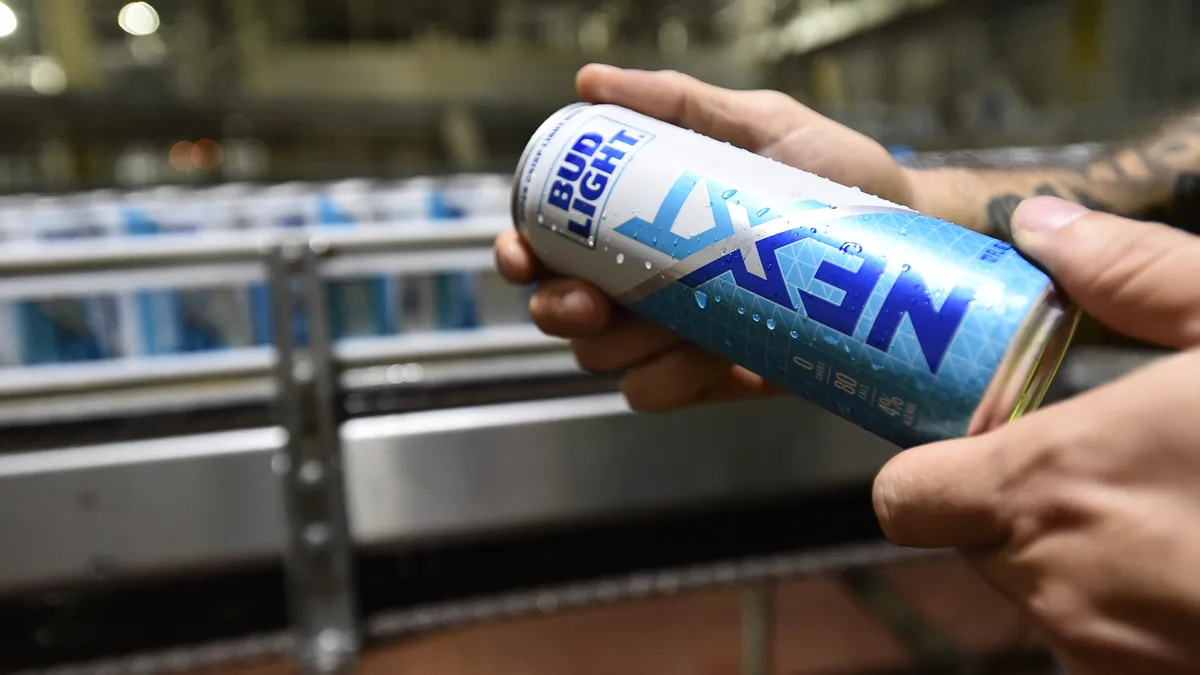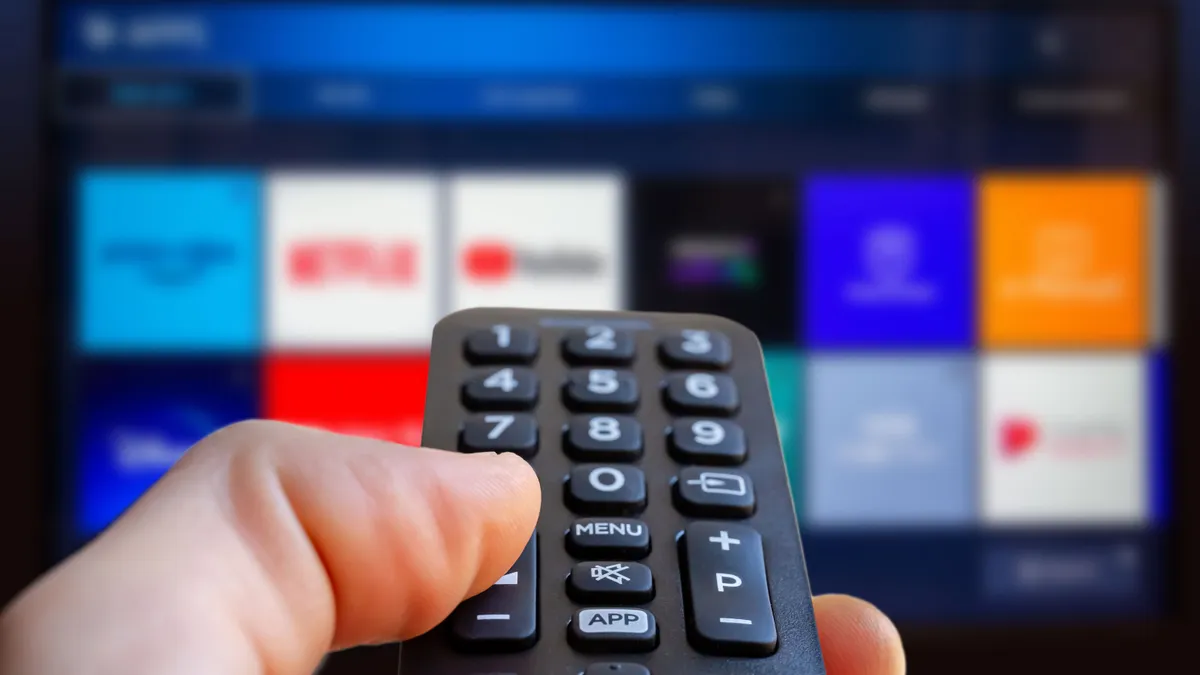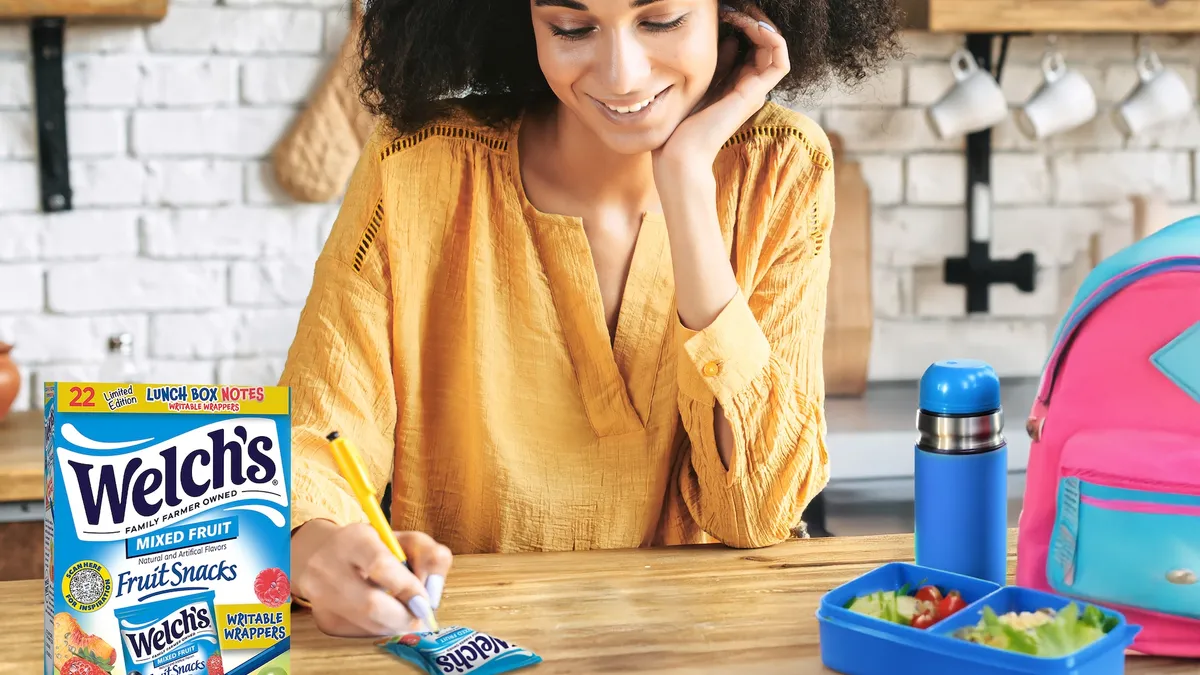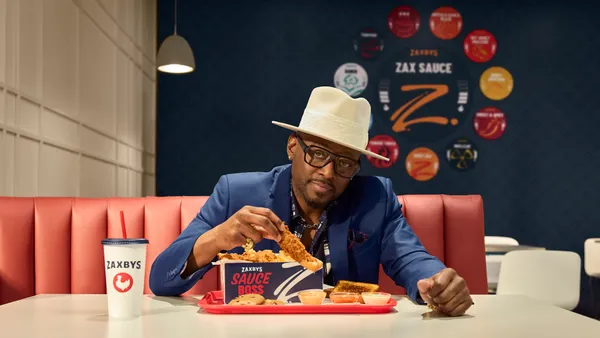Bud Light is launching its first zero-carb beer, Bud Light Next, with a new nonfungible token (NFT) project and accompanying Super Bowl campaign. Such drops have become increasingly popular in the advertising space as the line between physical and virtual blurs.
To promote the better-for-you beverage, the brand will launch the Bud Light N3XT Collection composed of 12,722 unique tokens designed in the blue and white color hues of the new brew's packaging. The tokens, priced at $399 apiece, are age-locked to consumers 21 and older and available only in the U.S. to those who purchase using ethereum or fiat currencies.
In addition to the token, purchase of the NFT will let buyers vote on Bud Light Next merchandise and give them access to brand and partner events. The token rolls out on Feb. 6, just a week before the Super Bowl. Bud Light Next will be available nationwide the following day, while parent company Anheuser-Busch is running an in-game commercial during the Super Bowl on Feb. 13 touting the new offering.
"What we're seeing in the space... is NFTs are continuing to redefine how we think about community and ownership, technology, all of those things," said Corey Brown, senior digital director at Bud Light. "And at the same time, Bud Light since 1982 has always been about innovation. So right now, what better time to launch something of this magnitude than when we ourselves are redefining the beer landscape with this new product called Bud Light Next."
The NFT age
The NFT market has exploded in the past few years. In 2018, the NFT market capitalization stood at $40.96 million. In 2021, that number had surpassed $40 billion. Once most closely associated with the sale of memes (for example, "Disaster Girl" sold for half a million dollars in cryptocurrency), NFTs have been quickly adopted by major brands as a foray into the digital consumerism space. As major internet brands such as Meta (formally Facebook) shift toward virtual reality and the metaverse, consumer brands like Walmart are eager to be part of the action.
For some, the prices of certain NFTs may seem ridiculous. For example, a 12-year-old in the U.K. made nearly $400,000 coding a low-resolution cartoon whale, and a single square pixel went for over $1 million dollars at auction. Such prices have some crypto investors worrying about a bubble. However, even though many investors believe the NFT bubble is close to bursting, there is a consensus that the technology is here to stay.
According to Brow, the price of Bud Light Next's NFT was thoroughly thought out.
"It's something that we took a close look at. We feel comfortable that the magnitude of the launch and some of the surprises that we have in store as well as the utility built in and our long-term focus on the project, that's how we arrived at the price," Brown said.
Bud Light's foray into the NFT space is indicative of a growing trend by alcohol brands. Entire direct-to-consumer marketplaces for alcoholic beverage NFTs exist. Platforms like BlockBar have attracted major brands like Glenfiddich, Dalmore and Hennessy. Additionally, rivals like Miller Lite have entered the metaverse with virtual bars as a way of circumventing Anheuser-Busch InBev's control over Super Bowl sponsor rights for the beer category. Along with Bud Light Next, AB InBev will also run spots for Bud Light Seltzer Hard Soda, flagship Budweiser, Cutwater Spirits and its Michelob offerings, commanding a total of four minutes of airtime.
Bud Light's NFT doesn't provide the purchaser with the physical drink. Instead, each Bud Light N3XT Collection token comes with adjacent perks, such as access to exclusive events, the details of which are still being worked out, according to Brown.
"We want to take consumers along the journey of Bud Light Next, and some of that is going to include trial of the product, certain voting rights on key brand decisions, for example, merchandise, and swag, and designs of the swag," Brown said. "And then of course we have some other fun things up our sleeves for some specific token holders that ladder back to some of our major brand partnerships."
While this is Bud Light's fist NFT, it is not AB InBev's. Budweiser Royalty, which sold out of its 11,000 available tokens, gave music fans access to exclusive perks associated with emerging musical artists.
In addition to the move into the NFT space, Bud Light hopes that Bud Light Next, which is packaged in a can reminiscent of an energy drink, can appeal to customers who want a beer with the nutritional stats of a hard seltzer. Hard seltzer has seen a meteoric rise in recent years, with $4.5 billion in sales between May 2020 and May 2021. White Claw, which is owned by Mark Anthony Brands, and Boston Beer Co.'s Truly make up 75% of the market share, while Bud Light also has a seltzer variety.
Similarly, Michelob Ultra, which was introduced in 2002 by AB InBev, is another low-calorie, light beer option. It's the fastest growing beer brand in the U.S., and the No. 2 beer in the industry by dollar sales. The introduction of Bud Light Next may be Bud Light's way of going after a younger crowd interested in better-for-you beverages. According to Brown, the target audience is people between 21 and 27 years of age.























